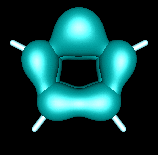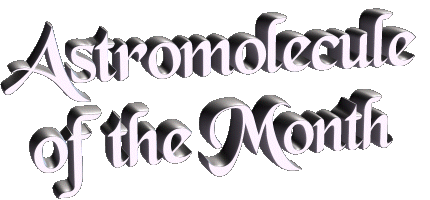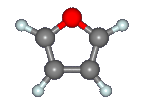|
The cyclic molecule furan (C4H4O) has been the subject of several unsuccessful
astronomical searches going back to 1972, when
Dezafra and coworkers sought for its
110-111 rotational transition at 4575.9 MHz in 9 sources
including NGC 2024 (the Flame nebula),
Cas A (a supernova remnant), and commonly scanned objects
such as IRC+10216, the Orion A nebula, and Sgr B2,
using the 140 ft Green Bank telescope.
In 1980, Kutner and coworkers searched for two additional
rotational transitions, at 10.584 and 88.748 GHz, in Orion A and Sgr B2 without success. Finally, in 2001
Dickens and coworkers reported that they were not
able to detect any of 6 rotational transitions in various sources in a multitelescope effort.
|
Furan is one of the simplest five-membered organic
ring compounds with a heteroatom substituted for a carbon atom.
This gives furan a dipole moment and enables a pure rotational spectra. Furan is an intriguing molecule to search for in
space because it is a precursor
to ribose and deoxyribose, which are critical components of both DNA and RNA. Furan is
aromatic, as indicated by the manner in which the pi
orbitals overlap around the ring as depicted in the image to the right.
|

|
|




